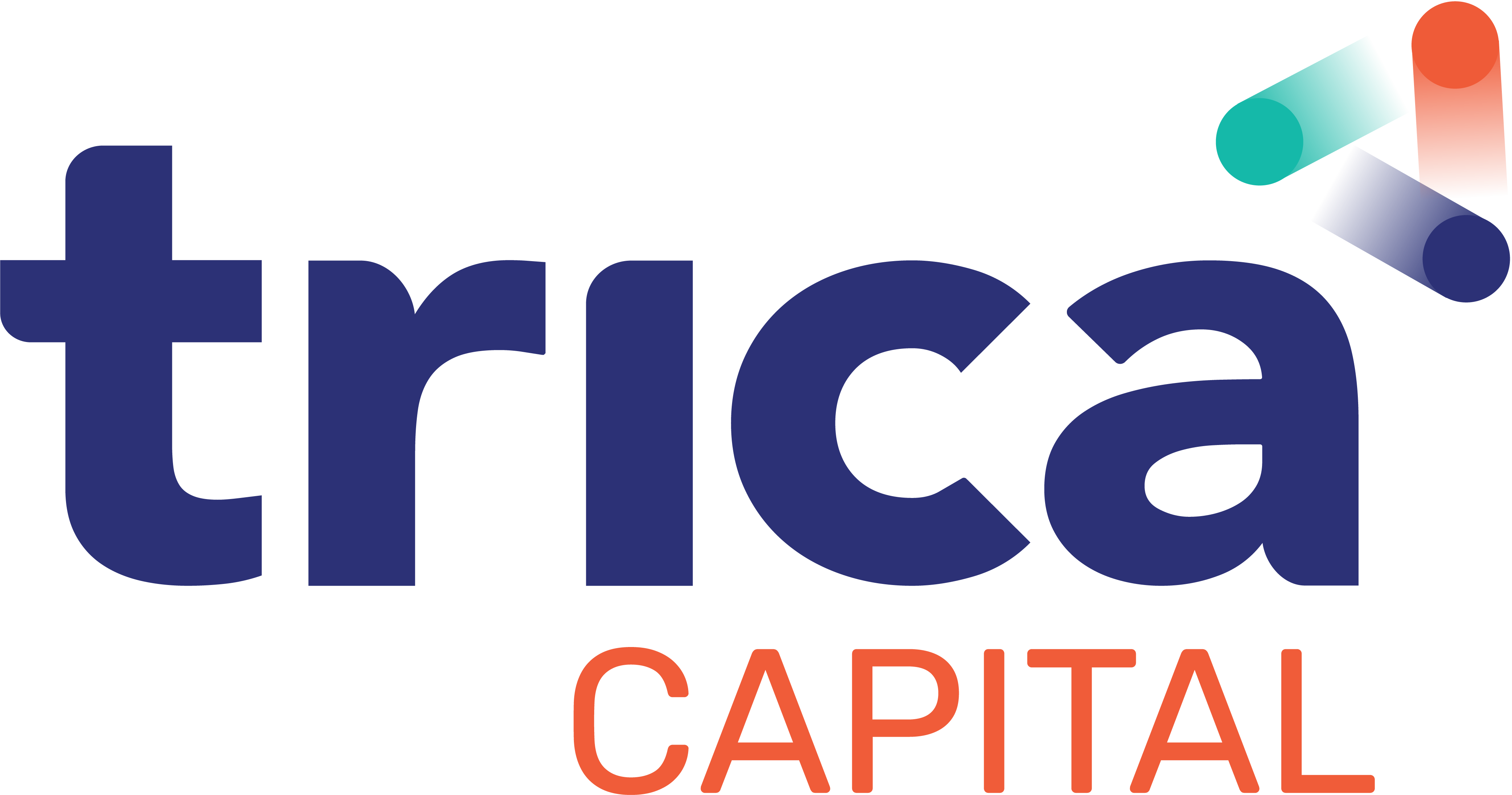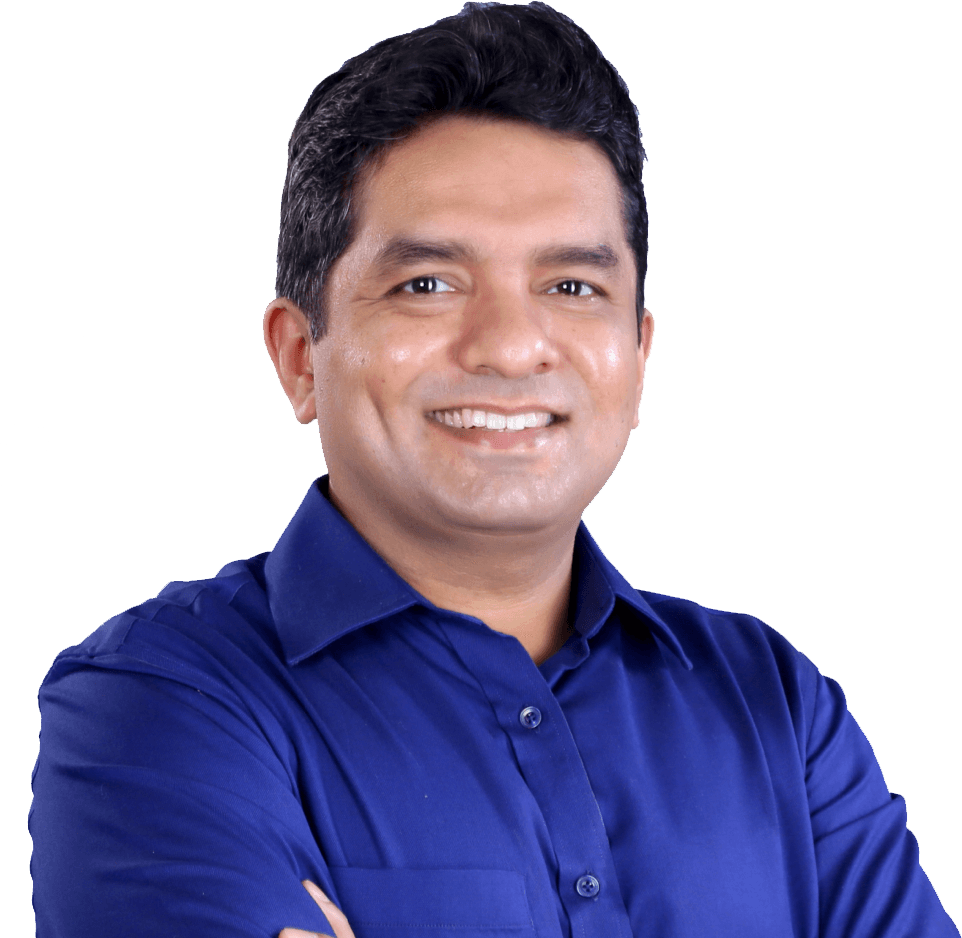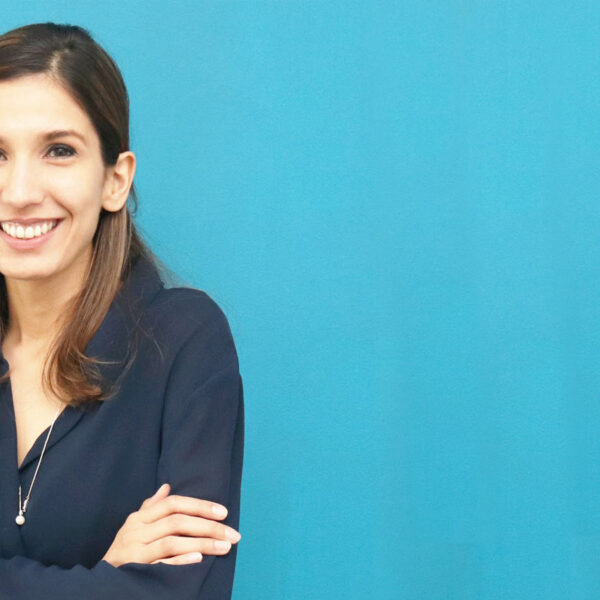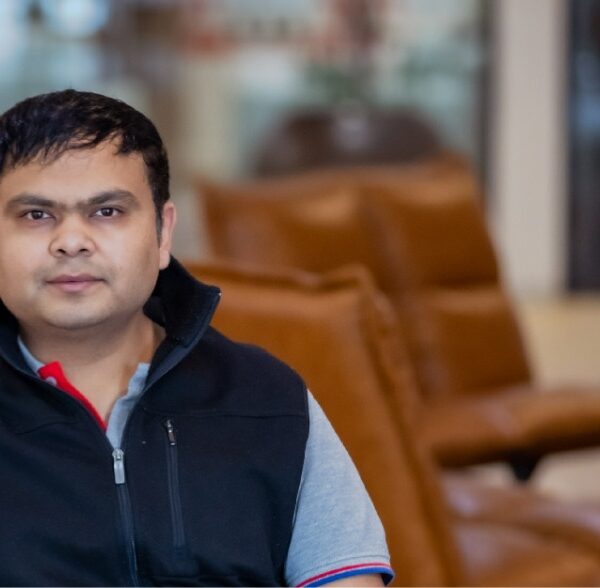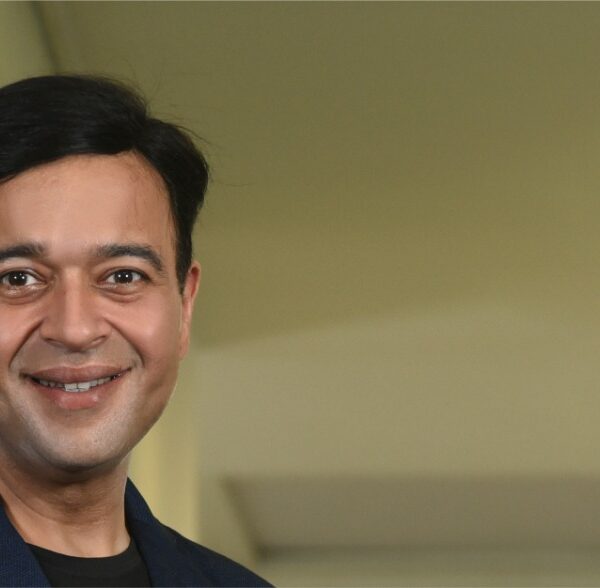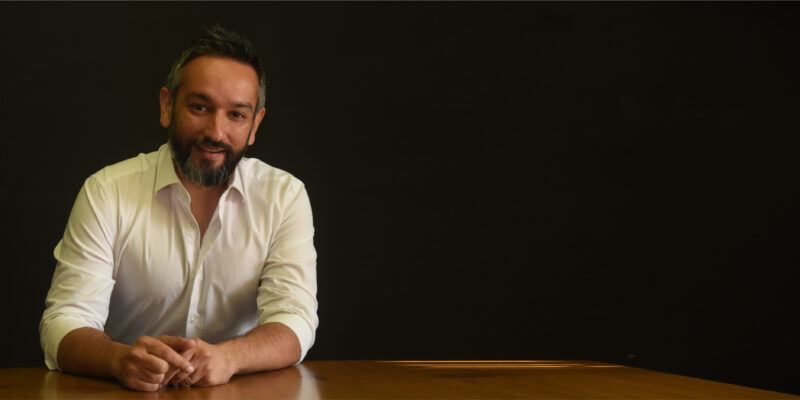
Anything that grows too fast is in danger: Sid Talwar
For the third edition of The Bellwether Club – trica’s interview series with India’s most prominent startup founders and investors – I’m delighted to introduce our guest: Sid Talwar, Co-founder and Partner at VC firm Lightbox Ventures.
Launched in 2014, Lightbox Ventures’ portfolio includes Rebel Foods, Dunzo, Melorra, Furlenco, Waycool, and Cleartrip, among others. The firm focuses on early-stage startups across sectors and plans to launch its fourth fund this year, having fully committed its third fund of $200 million which was raised in 2018.
But conversations with Sid go way beyond Lightbox; he has surely had an enviable diversity of experiences! No wonder he brings in Emotional Quotient (EQ) to his job – by understanding his portfolio founders better!
Sid was born in Kolkata, but his family moved to different countries every two years, thanks to his father’s job at the Bank of America. “Between Japan and Indonesia, we’ve covered almost every major country, and I went to American schools there. I went to an American school in India when dad was transferred to Delhi. So, my American-ness comes more from my schooling than from living in America for long periods of time,” he tells me, in an accent that agrees with him.
Sid moved to America full time for college, and he spent two years there afterwards. “I really don’t have that close of a relationship with America,” he says.
Naturally, my first question was: “You could have gone to the UK, to Japan, or Singapore; why did you choose to come back to India?” His answer is simple: “Opportunity.” Apparently, it was a holiday in India that was the turning point for a 21-year-old Sid. The call centre industry was booming at the time, and there was high demand to re-skill labour in order to manage the jobs at call centres.
When ChrysCapital funded Raman Roy to start Spectramind – the BPO which became a feather in ChrysCapital’s hat – young Sid looked into that opportunity. “I wrote a business plan in the US and came back to share it with my father (in India),” he recollects.
And there began a story which has surprised me more than once. Read on.
India had a Y2K moment, and firms like Infosys were scaling. A young college kid sees this opportunity (with BPO training), and decides to take action! I’m sure your father played a very critical role at that time, because he had seen more of the world. What was his advice to you?
His first reaction was “WHA…?!” (laughs)
But I shared this plan with him, and he gave it back to me a few days later, and he had marked it all over with a red pen; he said, “Let’s see what we can do.”
I wanted to raise a million dollars. I can’t remember how I came up with that number. There was no venture (capital) environment then. Raising a million dollars in 2000 was very different from what it is today. I got about $925,000, from the Singapore government-sovereign fund. Their CFO flew down to India for a press conference; it was very exciting!
But, about a month later, 9/11 happened and companies weren’t looking to hire training services anymore!
And my priority was to get an office and build a team. I was really young, and never managed money. Obviously, I was excited. And, outside of my family, I didn’t have access to any kind of blueprint in India, or any advisors or mentors to tell me to be careful.
You always take advice from your family differently than you take from other people. If I’d listened to everything my father said, it would have been a much easier ride for me.
Once my money started diminishing, I went out looking for training contracts.
The big lesson I learned was that you have to knock on enough doors; you never know which door is gonna open!
Out of the many meetings I had, one was with American Express. They didn’t give me their contract, but they said they introduced me to Sanjeev Aggarwal – later founder of Helion Ventures – who then had a company called Daksh. He gave us our first contract.
We suddenly went from training zero people to training a thousand people in three months. No one else was doing that then. Call centres were coming up in Mumbai, Noida, Gurgaon, Bangalore, and we started training them; that’s how we started growing.
So that gave birth to Evolv. How did it end?
In 2008, I was raising my Series C with a new fund; but many people warned me against VCs. So, I considered selling Evolv to another company. I had an inbound offer; but they weren’t educationalists. I’m not an educationalist either, but if I was going to sell my company, I wanted to learn from someone.
My youngest brother’s best friend’s dad was the President of NIIT at the time. That’s how I first met NIIT. They bought Evolv months later.
I was 29 then. Here are people who have been doing this business for 30 years – longer than I had been alive! For them, education was first; business was second. By virtue of them buying my company, I was now part of the leadership team.. I was with them for about two and a half years.
NIIT was a very established company even then. For them to believe a 29-year-old guy and acquire his business is amazing! Because I’ve seen large companies think, “We can build this, why do we need to buy this?”
For me the motivation to sell my company was to find people to look up to, and not feel alone in the journey.
Do you think living with the trauma of not knowing who’s going to write the next cheque in an uncertain business environment has moulded you as an investor?
Absolutely. And I’ve also evolved. It’s not like I ever say, “Listen, I’ve been through this, just calm down.” No one cares if you’ve been through it before or not. But to some extent, you know where their mind might be. A lot of the founders we work with are going through things at a much different scale than I did. I can’t feign that I can put myself in their shoes.
You and your partners Sandeep Murthy, Prashant Mehta and Jeremy Wenokur, all come from different backgrounds. How did you guys come together? Around 2008-09, the VC space was just evolving. Did you want to invest in a sector or basis a certain thesis?
Sandeep Murthy (who was my friend since school) had been managing Ram Shriram’s family office prior to this. He suggested doing venture capital. Jeremy had known Sandeep earlier. Prashant joined us a few later in 2014. We’d all been entrepreneurs at some point, and brought that mindset to the fund.

I rarely try to give founders advice about what they should do. But what matters is: are you there when they just want to talk to someone? And do you understand enough of their business to have a contextual conversation with them?
The only way to be able to do that is to not have too many startups in your portfolio. So, can we make a concentrated portfolio? That was part of the thesis.
But I know I’m early in this game. I have a lot to learn. Fred Wilson said it takes two fund cycles for you to become a venture capitalist, which is like 20 years. You’ve got to invest, watch them grow, and create liquidity to truly understand what this takes. To get real experience, do it twice.
How long did it take to raise the first fund? How many meetings did you have?
It took us about two years. It takes a while for first time fund managers. They have to prove to a series of investors that they will be able to do it.
When we were raising our first fund in 2012, very few homegrown funds had raised money in India. Today, there are many more.
The elections in 2014, things changed for us – from a fundraise perspective. Global funds started laying more attention to India. PM Modi gave investors confidence in the future of the country. And we saw quite a dramatic change in the way people were listening to our pitch, taking our meetings, and even giving feedback to us.

What were your biggest lessons around what potential LPs did and did not like?
My big learning was that our job is to return capital, not build businesses.
The life of funds is getting shorter and shorter. And businesses are built over long periods of time. So, unless you have very patient capital, you are not building businesses. It’s idealistic.

To return capital, you need to think of not just one portfolio company will do, but what a bouquet of companies can do.

Some companies create value sooner but liquidity later. Some companies give tremendous upside in value – but much later. So how are you balancing different companies in order to provide the best possible results for your LPs? Sometimes you like a company, but it doesn’t fit the bouquet you’re making.
The most difficult thing to do as an investor is to be patient. Warren Buffet has said, an investor should be learning every day, but shouldn’t act every day. I’ve tried to imbibe that. It’s harder than it looks.
What is your thesis on the duration of VC funds?
The longer the better. With the way India is, the best performing funds will always be the ones that stay invested longer. If I could invest the way that I believe one should invest in India, I would want the ability not to have to sell because of a timeline that’s been given to me.
The founders in your portfolio – Melora, Dunzo, Furlenco et al – are very different people. I know a few of them myself. I wonder if they share a common personality trait?
I think the thread that connects a lot of the people you mentioned is a certain level of grounded-ness. The way they pitched made me feel like they would figure things out. A lot of times, you’re looking at this person thinking if they’re faking it or saying something they don’t really mean.

Also, there’s tremendous pressure from your investors, bankers, the press, even employees. What we’re trying to evaluate is – what are they (the founders) going to do with this pressure? I don’t know how they’re going to handle the press or other investors. But one thing I do look for is how they respond to me.
I don’t think we could write a cheque in one meeting because you are the things that you say over time. If you’re depending on your ability to be able to figure out who the founder is, and you’re indexing on the founder, then you need to get to know that founder a little bit.
How does EQ and IQ weigh into your initial decision making?
As a VC, you tend to give founders too much money upfront. How will they deal with it? This is where a VC’s EQ comes in.
Say I’m giving you $100 million for 10% of your company. As is human, there’s a 95% chance that you can’t manage $100 million. But you have to grow fast. No investor is going to wait for you to build a company over 30 years. So, you have to be a genius in execution. How many people are like that? And as a VC if you’ve made the investment (of huge amounts), what have you done to the ecosystem?
I have not been in this industry for long enough to pontificate on the “right model.” But I’ve been alive long enough to know that for anything that goes up really fast – there is a danger. Most of the people who win the lottery and become rich really fast don’t stay rich.
I fear rapid growth, rapid execution, rapid deployment of capital. This is my biggest fear when it comes to this eco-system. Building businesses can’t become a rat race.

Has it changed your investment philosophy? Are you now writing larger cheques for more mature companies than before?
Yeah. I feel like the 10-year horizon for a fund doesn’t allow you to write a cheque very early on and watch the company mature. Unless you’re writing it at an angel or seed level. Series A is tough. Especially in India. We are analyzing the right time to write a cheque to get the most upside over a 10-year period. It takes much longer for companies to evolve in understanding their industry and getting them all right.
Even a 10-year period fund doesn’t really have 10 years, because it’s not like you’re making this investment on day one, right? You actually have 7-8 years to do this within a 10-year fund.
You can scale in India quickly. But if you do it too soon, you’re gonna mess up. I’m looking for a company that has gotten to a point where they just need to scale. They should have their core product figured out, so that they can scale it and also do other things in the periphery.
If a company becomes a unicorn in a year, that’s not a headline that I would be proud of. I’d be very scared. And I’m not saying that every company that’s got scale very quickly is going to fail. It’s just not for me.
Sometimes you notice that the brands have become big; but the underlying business is still small. Have you witnessed this in your portfolio?
A lot of brands seem larger than life. Maggi, Bata, Nirma, were all able to be in our head. Our understanding was that they were large – billion dollar brands; but actually, they weren’t.
Our ability to build larger brands is much greater today, as is our ability to grab eyeballs. Earlier, the only way to get attention was local marketing or television ads, or billboards. Today, you can be constantly in front of them, because they are constantly in front of some kind of mobile device. The combination of distribution and advertising allows brands to scale faster, cheaper, and with better service than ever before. Now, do they do it or not? We’ll see.
What about the Indian market? What’s your take on TAM?
In India, you can still build businesses of all kinds, whereas in the US, the market is quite saturated for many kinds of businesses. For you to truly build a large, significant business, you have to find a new mousetrap there.

For most consumer businesses, we don’t have the right numbers for for large the market is today or will be tomorrow.

If someone asked in 2010 – What is the target addressable market for a taxi service or a food delivery business, that market would have been really small compared to what we now know.
If a market hasn’t been created yet, that doesn’t mean that the market doesn’t exist or the opportunity doesn’t exist.
I’m not betting on an addressable market, I’m betting on a market opportunity. And that market opportunity has to be sold to me by a founder. If the founder can’t sell it to me, whether I believe it exists or not, I’m not ready to invest in that founder…yet. If they come back to me a year later, and do it then, I may invest then. For me, if a founder doesn’t have the clarity to build what they need to build in the timeframe that I need them to build it in, in order for me to make money, then it’s not the right time for me to invest. It’s not how I would want to invest, but it’s the nature of this job. Unfortunate but true.
You’re passionate about reading. What do you read and why?
If you’re a doctor or a lawyer, you have to continuously evolve, reading to understand what’s happening in your industry to do your job well. And that translates a little bit into venture capital too – because in venture, there’s so much going on. We don’t have these medical journals or legal journals that keep updating; but we have these geniuses all around. And so many of them write their thoughts down. If you can get something out of them, that adds value.
I used to read a lot of fiction. Novels offer a way of understanding people like nothing else will. If you have to be successful as an investor, the number one thing you need to be able to do is understand people. Meeting more people always helps. But reading good stories gives you an incredible understanding of how people behave, what motivates them, what scares them, what inspires them. Some of it comes from nonfiction. But so much comes from novels, because people have their culture draped around them. To understand them, you have to read stories. Then you can understand the difference in opportunities and cultures; you’ll know that people respond differently, say things differently. You grasp a lot more; you will be sensitive.
Reading exceptional literature is the best way to practise empathy.
What do you make of the present macros – the ‘funding winter’ on one hand, lifetime inflation highs in the US and massive new funds being announced simultaneously?
Funding cycles are a part of the deal. Sometimes there is too much money, sometimes there isn’t.
Companies are going to go through ups and downs, whether the macros are in their favour or not. That’s just the nature of the beast and anyone who’s had to build a business knows that. I only sit on six boards. It’s my job to remind founders that they shouldn’t go reckless when times are good and be completely cowardly when times are bad!
Inflation is high. We’re gonna see interest rates go up, perhaps change buying behaviour, and then things will change back. You have to expect that over a period of 10 to 12 years; you just have to kind of keep your head down.
Last question: All VCs have one great exit that makes them a legend. How do you want to be remembered after 10-20 years in this business?
Honestly, I don’t think I’m out there enough for me to be remembered. Or find “one business”. I’m not trying to find a business that will give me a return for others to “remember me”.
Sid looks for grounded-ness in his portfolio founders; I think the same quality is what makes him an exceptional human being and, hence, an outstanding investor. Bringing EQ into an investor ecosystem that may lose themselves in IQ and numbers, and ensuring that success takes not just hard work but patience too – that’s what makes him different.
What about you, dear reader? Write to me with your thoughts on this interview. I’ll be waiting!

